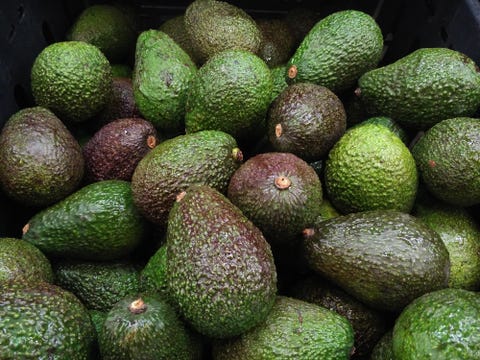
This week Donald
Trump took foreign and trade policy to a new level of absurdity by imposing new
tariffs on Mexico to induce our neighbor to solve a perceived immigration
problem. Beginning June 10th
all imports from Mexico will be increased by 5% per months for the next five
months. There after the tariffs will
remain at 25% until Mexico “substantially stops the illegal inflow of aliens
coming in through its territory.”
Measurement of this accomplishment was not specified. The new tariffs come just days after tariffs
on automotive products were eliminated to make way for the new US-Mexico-Canada
trade agreement.
Mexico has a much
smaller economy than the U.S. but our southern neighbor figures prominently in
the flow of goods to consumers. In 2018, the U.S. imported $371.9 billion in
goods from Mexico, while trade in the other direction is almost as great. In 2018, the U.S. exported $299.1 million to Mexico. This makes Mexico one of our largest trading partners.
Automotive
Sector First to Feel Pinch of Mexico Tariffs
A good share of imports
from Mexico is actually goods exported from the U.S., processed or assembled in
Mexico and then re-imported in a more finished condition. Your fresh Christmas tree last year is a good
example of this relationship. Pine tree
seedlings are started in the U.S. in greenhouses and then sent south in crates
for the warmer climate in Mexico. After couple
years accelerated growing time, the large trees are shipped back to U.S.
consumers.

Vehicles make up
the largest category of imports from Mexico.
The stark reality of Mexico’s role in the U.S. automotive supply chain
registered immediately in car stocks in the first day of trading following
Trump’s Twitter announcement. For
example, the First Trust Nasdaq Global Auto Index Fund (CARZ: Nasdaq) fell 2.3% following Trump’s
announcement.
The logic of
traders is simple. U.S. manufacturers
will not be able to absorb all the cost increases due to the tariffs. That means U.S. consumers can expect increased
prices at least $1,000 per vehicle due to the tariffs beginning within the next
few months. Some would-be buyers will
not even venture into dealerships at all because the price tag increase could disqualify
them for financing or present too-high down payment requirement. Expect automotive sales to decline and car
makers’ profit margins to shrink.
Consumers Use Their
Discretion
The second
largest category of imports from Mexico is electronic equipment such as flat
screen televisions, semiconductors, computer parts and software. Expect the economics of Trump’s new ‘immigration’
levy to work same way in this category as with automobiles. Manufacturers will simply not be able to
absorb a 25% increase on component costs and the typical chain of reactions. Most of the consumer discretionary exchange
traded funds reflected the gloomy consequences in trading following the
announcement. For example, the Consumer
Discretionary Select Sector SPDR Fund (XLY:
NYSE) fell 1.5% on the day after the tariff announcement.
Gravity of
Tariffs at Grocery Store

However, long
before car and computer sales begin to slump, consumers will notice the impact
of these new tariffs at the grocery store.
American’s eat over $12 billion in vegetables, fruit and nuts imported
from Mexico. Indeed, Mexico is the
single most important source of avocados for the U.S. Consumers are likely able to absorb the first
5% or 10% price increase, but eventually the full 25% tariff will be difficult
to justify. Shareholders of Chipotle
Mexican Grill (CMG: NYSE), relies on
avocado from Mexico its signature guacamole dish, are already feeling the pinch.
On the tariff announcement its shares fell 2.7% in anticipation of lost sales
and earnings.
Mexico Tariffs
in Well Crafted Distraction from Withering Indictment
Tariffs seem not
to make a great deal of sense from a strategic or even tactic perspective. No country or producer is ever a real winner
in tariffs. While tariffs might make a
loud statement, eventually such measures lead to reduced profits and production. Granted U.S.-Mexico border is the location
for both trade and immigration. Otherwise,
there is little causal connection that would suggest tariffs are a way to bring
about a solution to the immigration issue that some perceive at the southern
U.S. border.
A more likely explanation
for Trump’s action can be seen in the context of news coming out the day before
the surprise tariffs. Trump may have
been deeply embarrassed and perhaps even troubled by televised coverage of a withering
indictment by a special counsel who had investigated Trump’s conduct related to
the probe of Russian interference in the 2016 election. Exposure as potentially guilty of obstruction
of justice, Trump likely found a dramatic play with wide sweeping tariffs
against a non-U.S. target a perfect way to distract his supporters from the
results of the Russia probe.
How handy
tariffs are for a beleaguered president!
Any U.S. president can use executive powers in an emergency without
having to go to Congress for approval. A
president can impose sanctions, levy tariffs or institute quotas in the event
of trade developments that require rapid action. What is not entirely clear is whether a
president’s emergency power can be used to impose tariffs of the magnitude
threatened by Trump. Congress may yet
weigh in on the wisdom of this move.
Grab as many
avocados as you can and hope cooler heads prevail. Oh and buy a few put options for your automotive
and technology stocks just in case!
Neither the author of the Small Cap Strategist web
log, Crystal Equity Research nor its affiliates have a beneficial interest in
the companies mentioned herein.
No comments:
Post a Comment